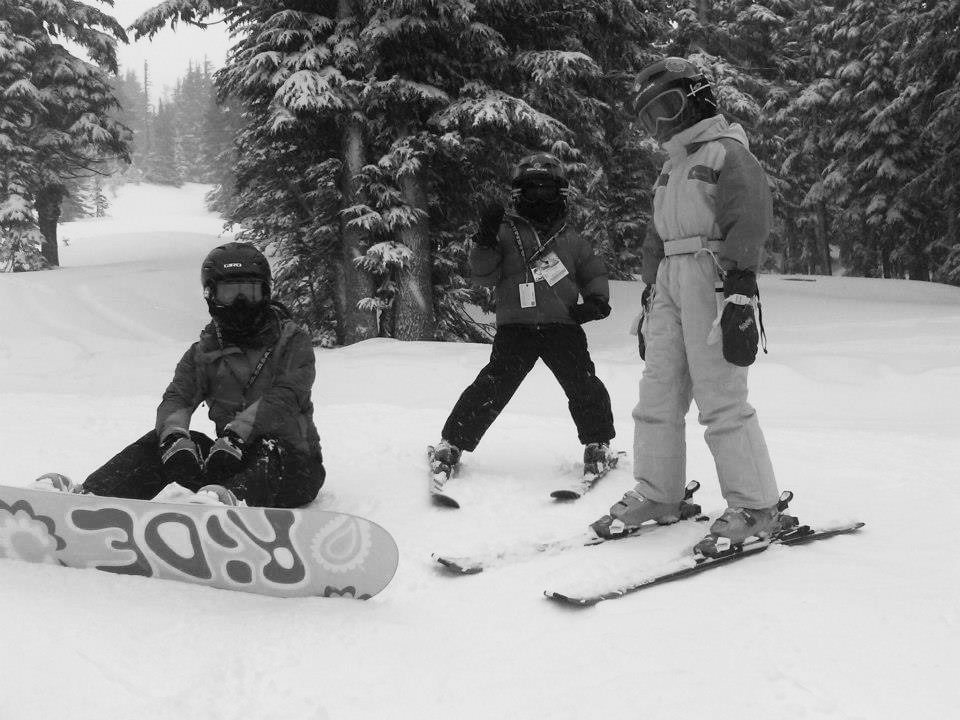I’ve been an avid skier for most of my life. Arguably, a good portion of kids in the Portland, OR metro area probably know how to ski or snowboard because of the convenience of living so close to Mt. Hood. While the ocean might be too chilly for surfing, the nearest mountain an hour east is the perfect place to go.
The culture of skiing and snowboarding here is very different from Colorado or in the Appalachians. Going up to the mountain is more spontaneous than planned; for my family, it is often just a random Sunday outing. The availability of affordable used gear and school-sponsored snow gear swaps at the beginning of the year make it accessible and affordable to many in the Pacific Northwest. Some schools also have a ski bus that picks up and drops off students at the mountain.
During winter break or Winter Term when I’m back at home, I try to hit the slopes a couple of times before returning to Oberlin. However, this year was a bit different — I only went once, on Martin Luther King Jr. Day, to Mt. Hood Meadows ski resort. The one day I went up was considerably the best day in the season so far. It was sunny, not windy, and the snowstorm the night before provided a considerable amount of powder for us to ski on. For all of the ski resorts on Mt. Hood, including Meadows, Timberline, and Skibowl, it’s been a tough start to the season due to insufficient snow accumulation. Even with the large snowstorm the night before MLK Day, there were still lots of rocks and tree branches poking out of the snow that I had to avoid. On a good day, the runs at the very top of the resort would be open; however, due to the lack of snow, that didn’t happen.
This year is also an El Niño year for the West Coast, meaning that there are warmer sea surface temperatures than on average. But can that justify the extremely late opening days? Mt. Hood Meadows and Timberline, the two largest and highest-in-elevation ski areas, opened up Dec. 9. However, Ski Bowl, which sits lower on the mountain, opened up Jan. 12 this year. Data from the National Oceanic and Atmospheric Administration Snow Station show that the snowpack for the last point taken on Feb. 6, 2024 indicates a below-average snowpack, or 71 percent of the median, than what we’ve seen in the past 40 years.
In the past, Timberline and Meadows have opened mid to late November, and Ski Bowl has usually opened mid-to-early December because of its lower elevation. For the El Niño in 2015, Meadows opened up on Dec. 11, two weeks behind their average opening date of Nov. 25. The snow on Mt. Hood for the 2015 El Niño was horrendous, at highest 34 percent of the median and at lowest, zero percent of the median.
With warmer weather, how do ski areas combat the lack of snow? On other mountains, they have resorted to making artificial snow. This is made by forcing water and compressed air together in snow cannons. The product is then atomized into droplets before being shot out into the open air, where the droplets mix with cold air and become snow. Skibowl, being the lowest in elevation of the three resorts, has adopted snow cannons into their portion of the mountain. Meadows and Timberline have yet to follow suit. In a study published in 2023 from the University of Grenoble, a group of scientists took samples in 28 European countries and found that, without artificial snowmaking, 53 to 98 percent of the 2,234 ski resorts studied are at high risk for snow supply in the future due to climate change.
A climate report in 2022 done by the U.S. Department of Agriculture Forest Service on the Mt. Hood National Forest shows that snow sports may be less common in the future due to climate change. First, “higher temperatures will result in more precipitation falling as rain at high elevations, a substantial decline in mountain snowpack, earlier snowmelt, and decreases in summer streamflow,” which will make flooding occur more often in the summer. Second, “higher temperatures are expected to create more opportunities for warm-weather activities (e.g., hiking, camping, water-based recreation) and fewer opportunities for snow-based activities (e.g., skiing, snowmobiling),” which we are already seeing with the ski resorts closing early for the winter season and opening early for the summer season. This will especially affect ski areas and other facilities that are at lower elevations. The USDA Forest Service also stated that “increased precipitation as rain may increase availability of water for snowmaking during winter in the near term, but warmer temperatures may also reduce the number of days per season when snowmaking is viable,” since snow cannons need freezing temperatures to successfully create snow.
The prospect of a snowless Mt. Hood within 50 years raises questions about the future of skiing and snowboarding in Oregon. Will reliance on artificial snow become necessary to sustain the sport? Only time will tell.








